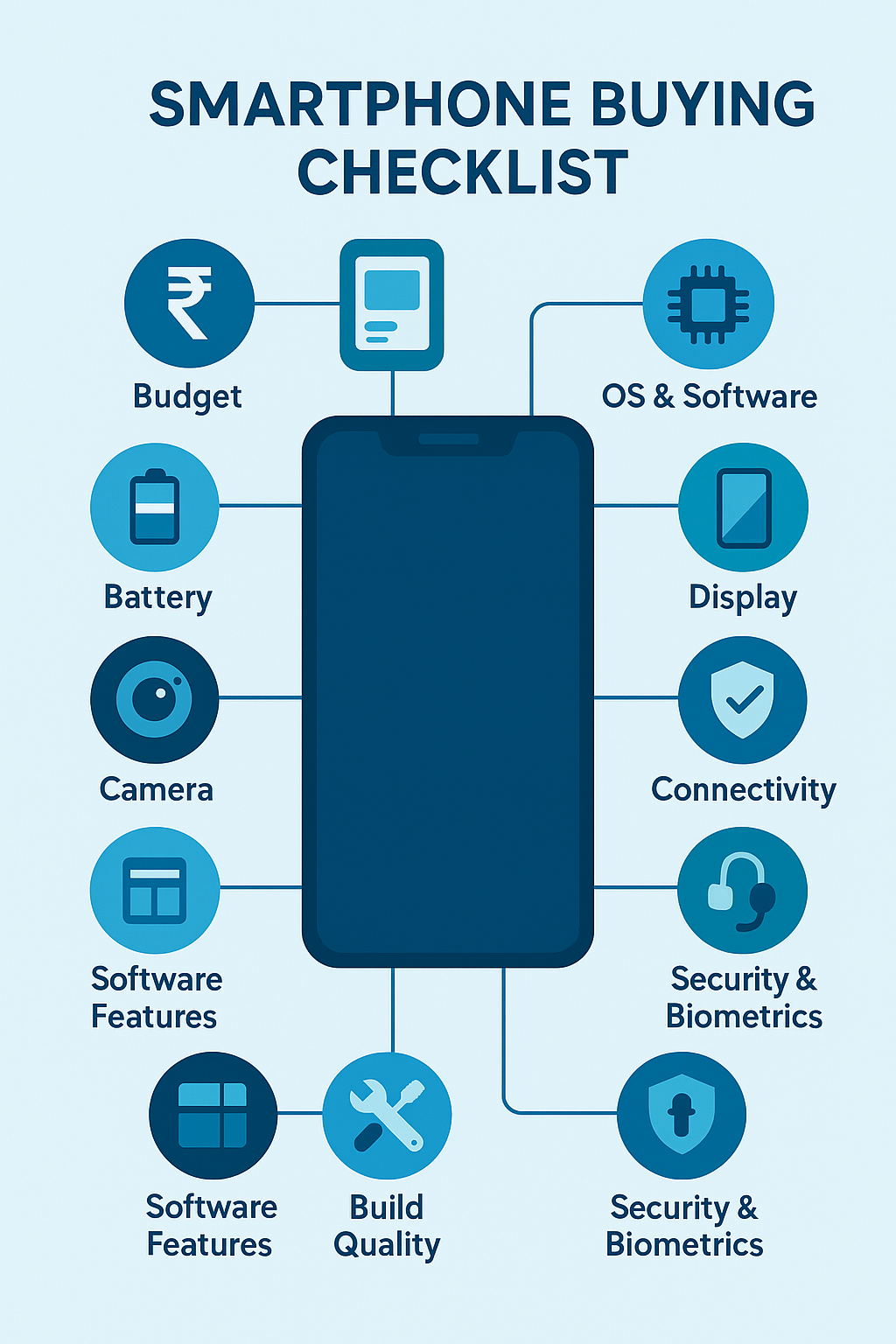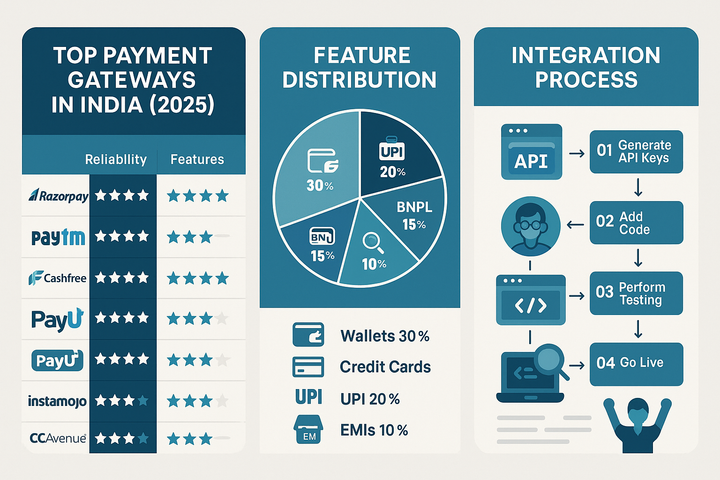The Ultimate Smartphone Buying Checklist: 13 Factors to Evaluate Before You Buy

Buying a new smartphone can feel overwhelming, with dozens of models boasting similar specs at every price point. Whether you’re an Android aficionado or an iPhone enthusiast, having a clear checklist ensures you make an informed choice that aligns with your budget and lifestyle. This guide breaks down 13 essential factors to check before hitting “Buy Now,” complete with a handy infographic you can refer back to.
1. Budget & Price Range
Setting a budget prevents overspending and focuses your search:
- Decide on a price ceiling (e.g., ₹15,000, ₹30,000, ₹50,000).
- Account for extras: cases, screen protectors, extended warranties.
2. Operating System & Software Updates
Your choice of OS affects app availability and ecosystem:
- Android vs iOS: Consider ecosystem lock-in (Google services vs Apple devices).
- Update policy: Look for 2–3 years of OS upgrades and security patches.
3. Performance (Processor & RAM)
Under the hood, performance determines multitasking and gaming:
- Processor (SoC): Check for 5G chipsets (e.g., Snapdragon 6/7-series, Dimensity series).
- RAM: 4 GB for basic use; 6–8 GB for heavy multitasking and gaming.
- Storage type: UFS 2.2/3.1 for faster app load times; microSD slot for expansion.
4. Display Quality
Your daily interaction hinges on display clarity and smoothness:
- Resolution: FHD+ (1080p) vs HD+ (720p).
- Panel type: AMOLED/OLED for vivid colors; IPS LCD for cost-effective brightness.
- Refresh rate: 60 Hz vs 90 Hz/120 Hz for responsiveness.
- Protection: Gorilla Glass or Dragontrail for scratch resistance.
5. Battery & Charging
Long battery life and fast charging save you from mid-day anxiety:
- Capacity: ≥4,000 mAh for moderate use; ≥5,000 mAh for heavy users.
- Charging speed: 18 W vs 30 W vs 65 W – consider heat management.
- Extras: Wireless and reverse charging for convenience.
6. Camera System
Capture life’s moments with the right lens configuration:
- Main sensor: ≥48 MP with OIS for low-light clarity.
- Auxiliary lenses: Ultra-wide, macro, depth, telephoto – based on your usage.
- Selfie camera: ≥16 MP with wide-angle.
- Video: 4K/30 fps or 1080p/60 fps with EIS.
7. Connectivity & Network Support
Ensure seamless connections wherever you go:
- 5G & VoLTE bands: Match your carrier’s frequencies.
- Wi-Fi & Bluetooth: Wi-Fi 6 for speed; Bluetooth 5.2+ for stable audio.
- NFC & IR blaster: Tap-to-pay and universal remote control.
8. Build Quality & Design
Durability and comfort factor into daily handling:
- Materials: Metal and glass for premium feel; polycarbonate for durability.
- Ingress protection: IP53/67 rating guards against dust and splashes.
- Ergonomics: Consider weight, thickness, and button placement.
9. Audio & Multimedia
Look beyond visuals to immersive sound:
- Speakers: Stereo vs mono; loudness and clarity.
- Headphone jack: Rare but handy for wired audio.
- Haptics: Quality vibration motors improve feedback.
10. Security & Biometrics
Secure your data with reliable authentication:
- Fingerprint sensor: In-display optical vs side-mounted capacitive.
- Face unlock: Quick but less secure than PIN/password.
- Privacy features: App lockers, secure folders.
11. Software Features & Extras
Unique software enhancements can boost productivity:
- Custom UI vs Stock: MIUI, One UI, OxygenOS – balance features and bloatware.
- Gaming modes: Performance boosters and network optimizers.
- Pre-installed apps: Look for minimal bloat to maximize storage.
12. Warranty & After-Sales Service
Peace of mind comes from robust support:
- Service center availability: Check brand presence in your city.
- Warranty terms: Length (12–24 months) and coverage (screen, water damage).
- Software support: Frequency of security patches.
13. User Reviews & Benchmarks
Real-world feedback and objective data confirm your choice:
- Community opinions: Tech forums, Reddit threads, YouTube reviews.
- Benchmark scores: AnTuTu, Geekbench for performance; DXOMark for camera tests.
Conclusion
Armed with this Smartphone Buying Checklist, you can confidently navigate the crowded market and zero in on the device that best fits your needs. Bookmark this guide and infographic, compare your shortlisted models side by side, and make a purchase you’ll enjoy for years to come.
FAQ
1. How much RAM do I need?
For everyday tasks, 4 GB is sufficient; for heavy multitasking and gaming, opt for 6–8 GB.
2. Are high refresh-rate screens worth it?
Yes—90 Hz and 120 Hz displays deliver smoother scrolling and more responsive touch input, noticeable in gaming and browsing.
3. Does IP rating matter?
If you’re clumsy or take your phone outdoors, an IP53/67 rating protects against dust and splashes.
4. How important is a microSD slot?
Critical if you store a lot of photos, videos, or apps and want to expand beyond the built-in storage.
5. Should I prioritize the camera or the battery?
Balance both based on your lifestyle: choose a larger battery for all-day use or a better camera for photography enthusiasts.

